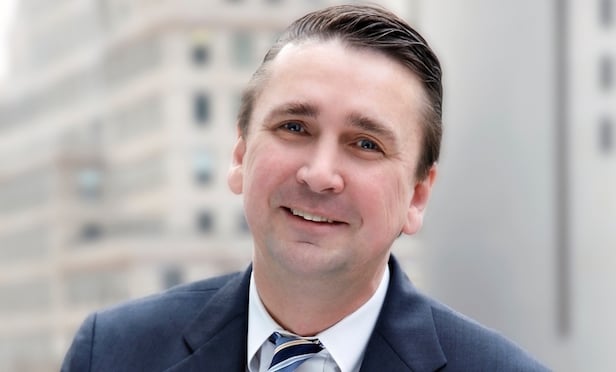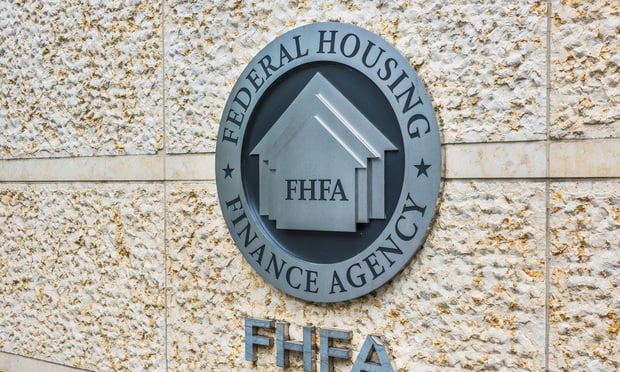
NEW YORK CITY—Well, that didn't take long. July's plunge in the CMBS delinquency rate erased nearly all of the steep 28-basis point climb that late-pays experienced in June, Trepp LLC reported Tuesday. That being said, delinquencies have been trending upward on both a year-over-year and year-to-date basis.
June's increase to 5.75% marked the biggest monthly rise in the Trepp CMBS delinquency rate in five years. The delinquency rate at July 31 was 5.49%, just two bps above May's level. Manus Clancy, senior managing director at Trepp, cites just $1.4 billion in CMBS turning newly delinquent last month, or about $1 billion less than the total that went into arrears during June.
The improvement seen in July may be short-lived, though. Trepp reports that after hitting a post-crisis low in February 2016, when it fell to 4.15%, the late-pay rate has consistently climbed since early last year as loans from 2006 and 2007 have reached their maturity dates and have not been paid off via refinancing.
The rate has moved up in 13 of the past 17 months, Trepp says. July's rate is up 73 bps from a year ago, and 26 bps higher YTD.
“We may see the delinquency rate dance around a bit over the next few months as we enter the final innings of the wall of maturities,” Clancy says. “There are enough large loans that can be resolved via modification, default or refinancing that we may see the status of those assets change over the next few months. It's a fittingly uncertain ending for many loans that have been mired in uncertainty for almost a decade.”
Three of the five major property types saw improvements in their CMBS delinquencies during July. The exceptions were lodging, where late-pays jumped 15 bps to 3.68%, and retail, now at 6.63% after an increase of two bps.
Conversely, multifamily regained its longstanding position as the best-performing property type. The 101-bp decline to 2.91%, and the 110-bp increase the month before, both were related to two large portfolio loans that were reported as delinquent in June. An extension option was triggered, and the loans are now back to being current. Industrial delinquencies retreated by 61 bps to 6.96%, and office delinquencies declined by 43 bps to 7.24%.

June's increase to 5.75% marked the biggest monthly rise in the Trepp CMBS delinquency rate in five years. The delinquency rate at July 31 was 5.49%, just two bps above May's level. Manus Clancy, senior managing director at Trepp, cites just $1.4 billion in CMBS turning newly delinquent last month, or about $1 billion less than the total that went into arrears during June.
The improvement seen in July may be short-lived, though. Trepp reports that after hitting a post-crisis low in February 2016, when it fell to 4.15%, the late-pay rate has consistently climbed since early last year as loans from 2006 and 2007 have reached their maturity dates and have not been paid off via refinancing.
The rate has moved up in 13 of the past 17 months, Trepp says. July's rate is up 73 bps from a year ago, and 26 bps higher YTD.
“We may see the delinquency rate dance around a bit over the next few months as we enter the final innings of the wall of maturities,” Clancy says. “There are enough large loans that can be resolved via modification, default or refinancing that we may see the status of those assets change over the next few months. It's a fittingly uncertain ending for many loans that have been mired in uncertainty for almost a decade.”
Three of the five major property types saw improvements in their CMBS delinquencies during July. The exceptions were lodging, where late-pays jumped 15 bps to 3.68%, and retail, now at 6.63% after an increase of two bps.
Conversely, multifamily regained its longstanding position as the best-performing property type. The 101-bp decline to 2.91%, and the 110-bp increase the month before, both were related to two large portfolio loans that were reported as delinquent in June. An extension option was triggered, and the loans are now back to being current. Industrial delinquencies retreated by 61 bps to 6.96%, and office delinquencies declined by 43 bps to 7.24%.
Want to continue reading?
Become a Free ALM Digital Reader.
Once you are an ALM Digital Member, you’ll receive:
- Breaking commercial real estate news and analysis, on-site and via our newsletters and custom alerts
- Educational webcasts, white papers, and ebooks from industry thought leaders
- Critical coverage of the property casualty insurance and financial advisory markets on our other ALM sites, PropertyCasualty360 and ThinkAdvisor
Already have an account? Sign In Now
*May exclude premium content© 2025 ALM Global, LLC, All Rights Reserved. Request academic re-use from www.copyright.com. All other uses, submit a request to [email protected]. For more information visit Asset & Logo Licensing.








